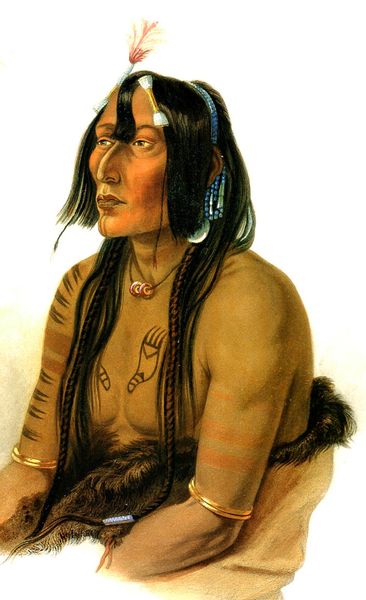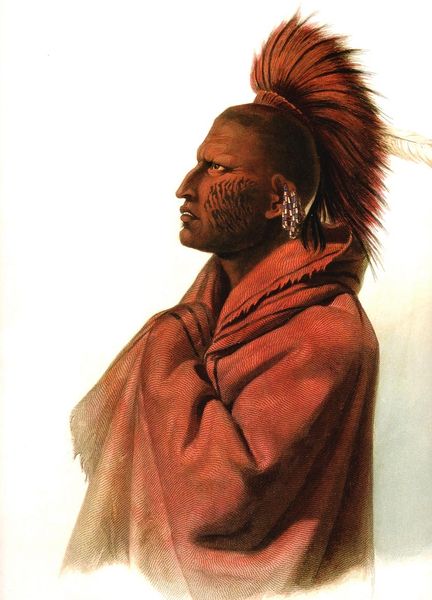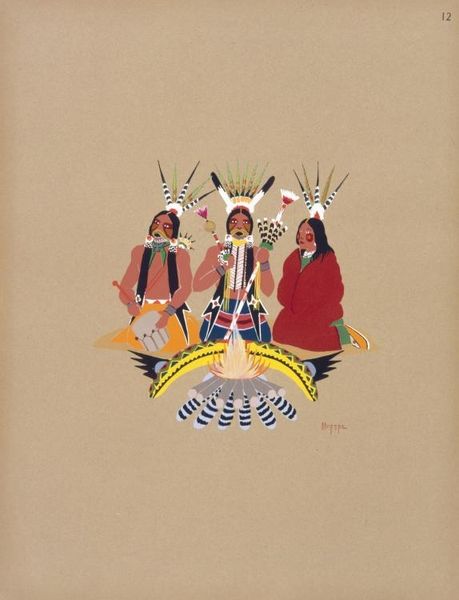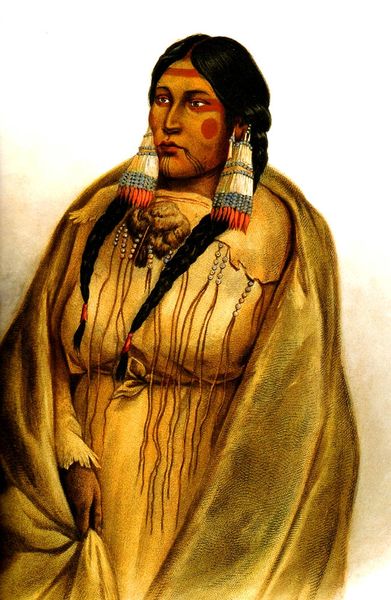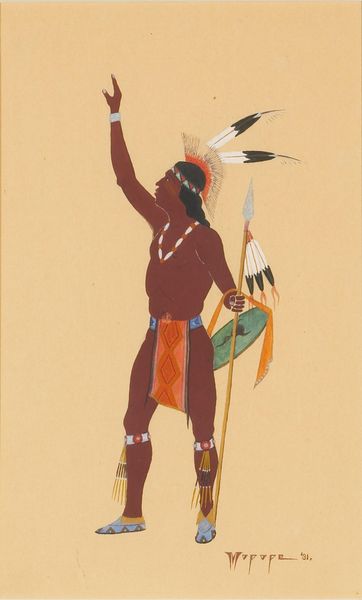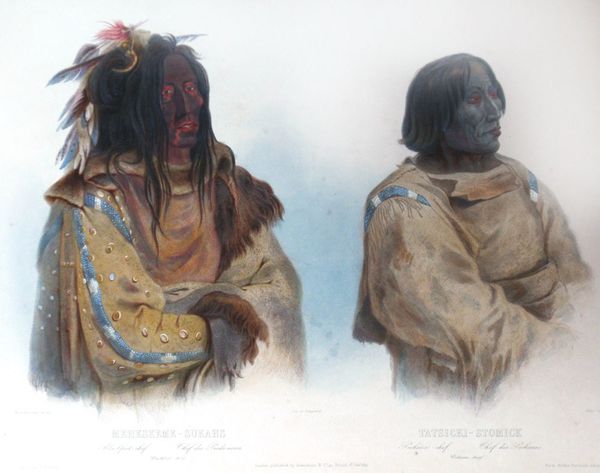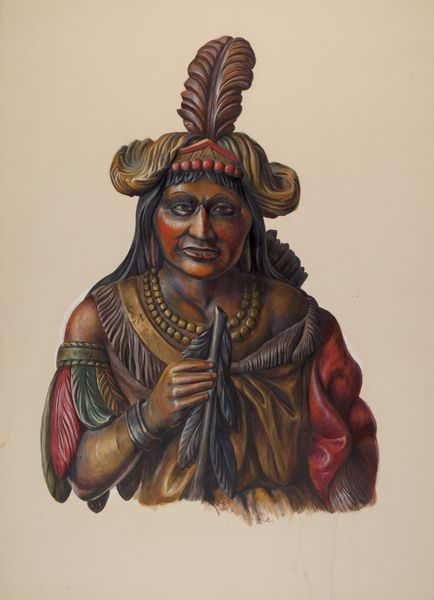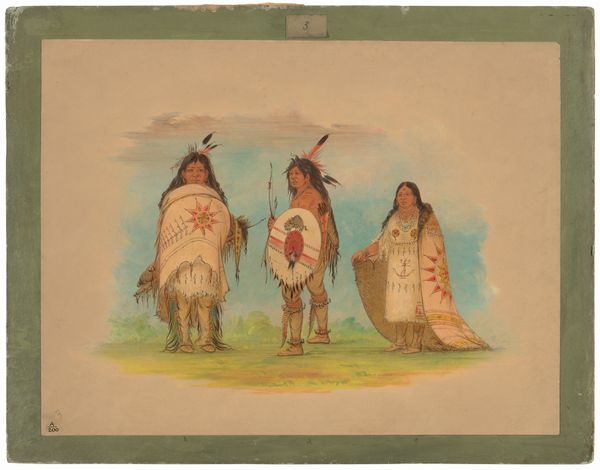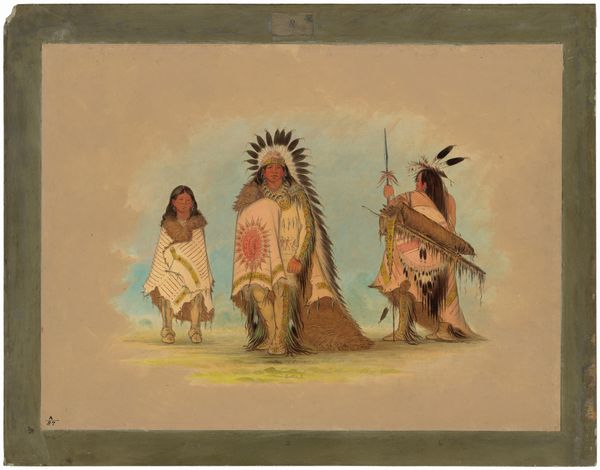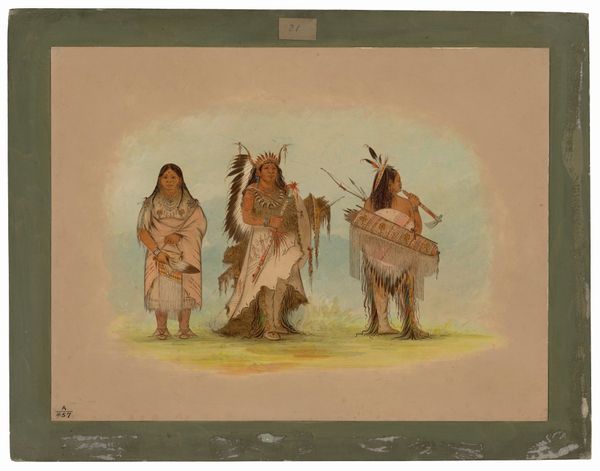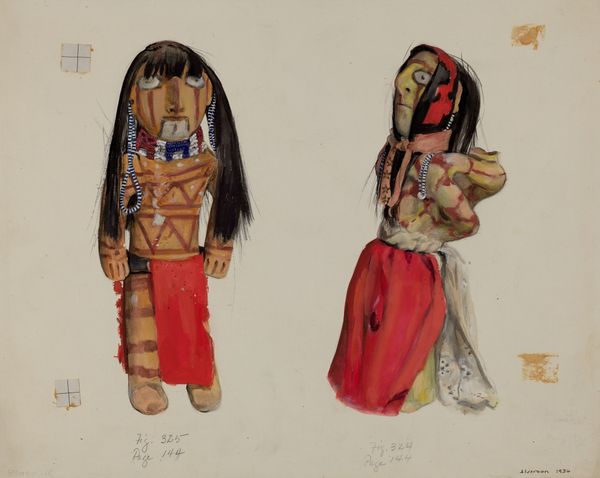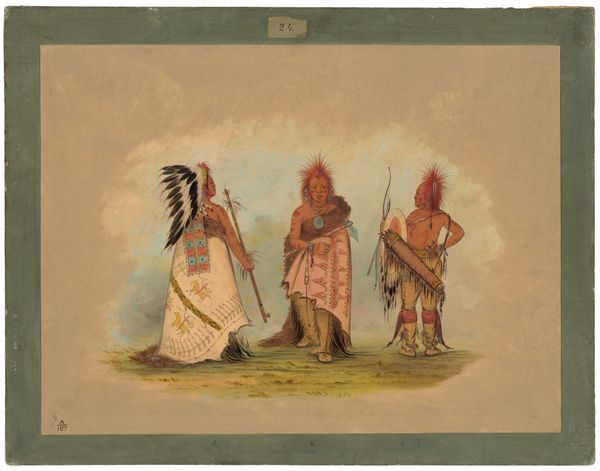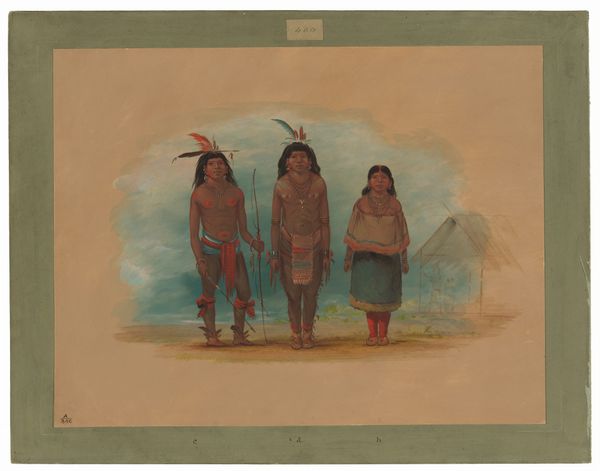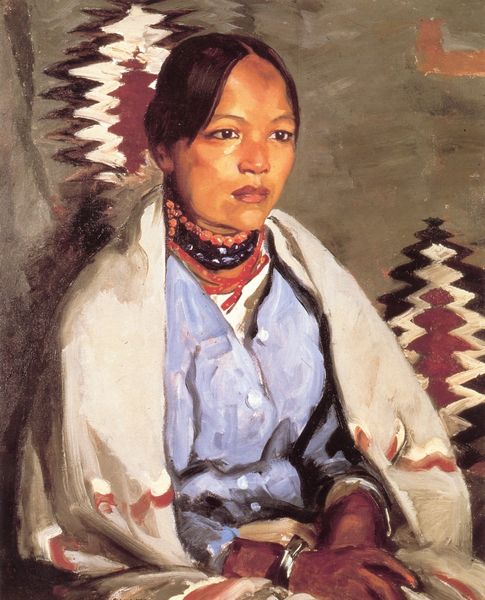![Kiasax [ Bear on the Left ] by Karl Bodmer](/_next/image?url=https%3A%2F%2Fd2w8kbdekdi1gv.cloudfront.net%2FeyJidWNrZXQiOiAiYXJ0ZXJhLWltYWdlcy1idWNrZXQiLCAia2V5IjogImFydHdvcmtzLzllOTJhYTNjLTQ3MDItNDdmMS1hM2QwLWJmNmJlY2E4NGI0OS85ZTkyYWEzYy00NzAyLTQ3ZjEtYTNkMC1iZjZiZWNhODRiNDlfZnVsbC5qcGciLCAiZWRpdHMiOiB7InJlc2l6ZSI6IHsid2lkdGgiOiAxOTIwLCAiaGVpZ2h0IjogMTkyMCwgImZpdCI6ICJpbnNpZGUifX19&w=3840&q=75)
#
portrait
#
figuration
#
mixed media
#
watercolor
Copyright: Public domain
Curator: Looking at this watercolor and mixed media portrait, dating perhaps from the early to mid-19th century and created by Karl Bodmer, one can see the meticulous detail. What do you think when you see it? Editor: He feels rather solemn, doesn’t he? Almost resigned. The way the artist has rendered his face… there’s a starkness in that red that feels ceremonial, burdened perhaps, not celebratory. Curator: Bodmer's work, especially his depictions of Indigenous peoples, are really important documents of a specific moment in history. You get a sense here of the collision of cultures. He has the striped Navajo blanket, and if you look closely, there’s a metal cross necklace—signs of trade and the encroaching influence of settlers and missionaries. Editor: Precisely! These aren’t just aesthetic choices; they speak to larger historical shifts. What was Bodmer's position in relation to his subject? Was this a portrait born of respect, or observation? How does that relationship shape our reading? Curator: These images were used as documentary, as anthropological, records – although obviously very subjective. The title, "Kiasax [Bear on the Left]," suggests a connection to the natural world. It's visible in the single eagle feather, almost casually placed but highly symbolic. Editor: The flute too—a signifier of culture and connection. Notice how its angle mirrors the angle of his back. The positioning, that small detail, feels loaded with meaning, perhaps deliberately connecting him to musical and oral tradition, as colonization actively suppresses native language and heritage. It underscores this liminal space this individual seems to inhabit. Curator: Definitely. As a record, the artwork itself operates in a social and political context, mediating our access and influencing its viewers over time. Editor: Ultimately, the portrait serves as a reminder. It embodies both the dignity and the disruptions facing Indigenous communities then…and perhaps still today. It urges us to seek deeper meaning beneath the surface, questioning the colonial gaze present here, if unconsciously.
Comments
No comments
Be the first to comment and join the conversation on the ultimate creative platform.
